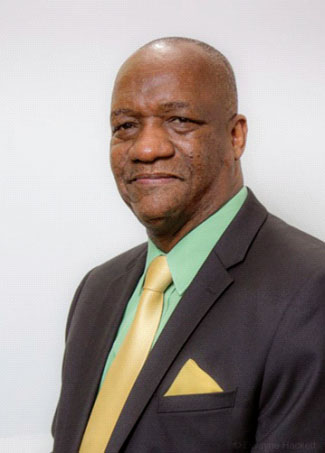“The information provided by the Protected Areas Commission [PAC] showed clearly what the violations were that were taking place in that area and it was… the analysis of that information and the intelligence that was provided that allowed for the operation to be mounted and dismounted,” Minister of State Joe Harmon said.
At the time, he was speaking at Friday’s post-Cabinet press conference, and addressing the recent joint services exercise, Operation Midas, conducted at the Kaieteur National Park (KNP).

As it relates to questions about the reason for the Guyana Defence Force’s (GDF) involvement in a matter that should have otherwise been executed by the Guyana Geology Mines Commission (GGMC), Harmon reiterated that the operation carried out was a joint one, before saying that the GDF was there to provide the “necessary security” for the other agencies to carry out their work.
“The GDF operation was a part of a joint operation and that operation included that the Protected Areas Commission, Guy-ana Geology Mines Com-mission and the Guyana Police Force (GPF). The army provided the type of security that was needed for these other entities to do their work; it was not a purely army operation, it was well-planned,” he stated.
Meanwhile, in response to questions asked relating to the detainment of Capitol News Cameraman by the GDF last Sunday at the KNP, Harmon said, “Of course the army can detain somebody in an area that is an operation area. It’s a limited detention that occurs until the person is handed over to the relevant authorities so yes that can be done.
“I believe that the army did give an explanation for this and I believe that the explanation was a reasonable one in the circumstance. I did not go on to question why this worker was detained but the sense I got from the army report is that the person was in the area that he should not have been since the army was conducting operations there.”
On Wednesday, the Ministry of the Presidency issued a statement which said that the joint operation incorporating the GDF, GGMC, the GPF and PAC had concluded, and that all officers on the ground have since returned to the city.
“As a result of the operation, which included foot patrols and aerial surveillance throughout the park, illegal mining activity has been brought to an end with equipment seized and mining camp areas secured,” the statement added.
During the two-week operation, eight camps were discovered, six of which were active. According to the findings reported by the joint services, 26 mining engines were seized, as well as the equivalent of two and a half barrels of fuel and a diving suit.
The team also reported the presence of mobile dredging operations (draggers), which were quickly moved by operators, once they became aware of the presence of the joint services.
The statement also made reference to Commissioner of PAC Denise Fraser who said the agency will be “upping its monitoring activities in the area and will work to establish a plan to ensure that the recommendations, which fall within its remit, are put into full effect.”
One of the recommendations made, was the need for a clear and obvious demarcation of the protected area boundary. The need for a “visible” boundary has been the cry of residents of Chenapau following the arrest of 21 persons from the village on allegations of their engagement in illegal mining within the KNP.
In the days that followed their arrest, the village council, in interviews with the media vehemently denied that residents were mining in the park, and that apart from a signboard, which is acknowledged as the park boundary, there is no clear cut boundary to show the separation between lands considered part of the protected area.
In addition to this, the joint services report recommended that all operators should be prohibited from transporting mining equipment and other such paraphernalia into the KNP from any port of entry. The report called for the impounding of all equipment seized and prosecution of the registered owners.
Alluding to what is considered to be significant water pollution and damage to trees, observed in all of the mining areas identified, the team has recommended that remediation efforts should be considered to restore the distorted waterways and damaged patches of forest.
It also called for charges and fines to be instituted against the owners of the equipment, which caused the degradation of the environment.
The joint services also called for the prohibition of mobile mining activity near the park and for the removal of ‘draggers’ or mobile dredges from the Potaro River. There were also recommendations made regarding the need for clear and appropriate public information directed at residents and visitors to the park.





